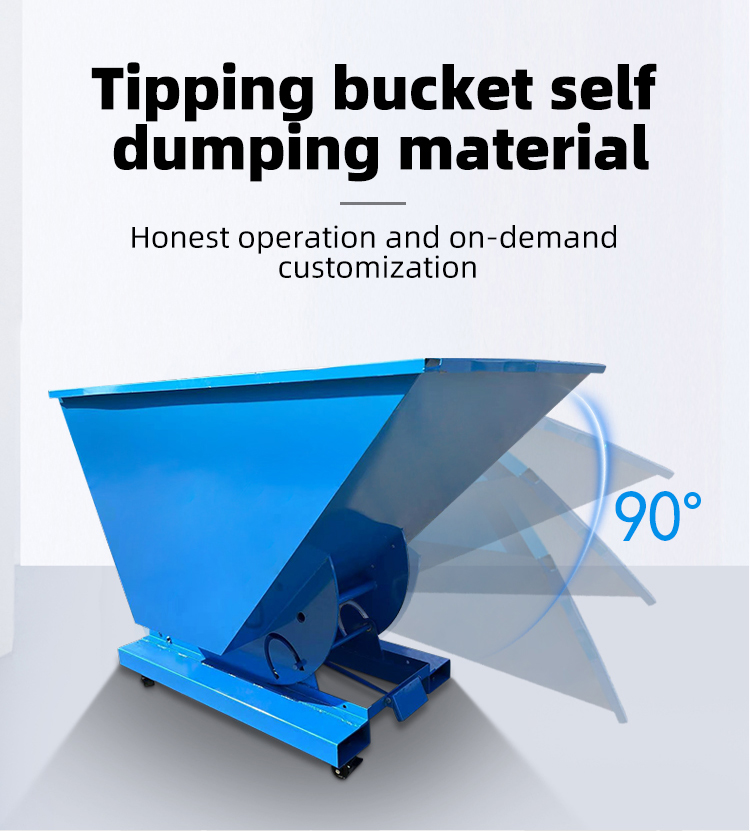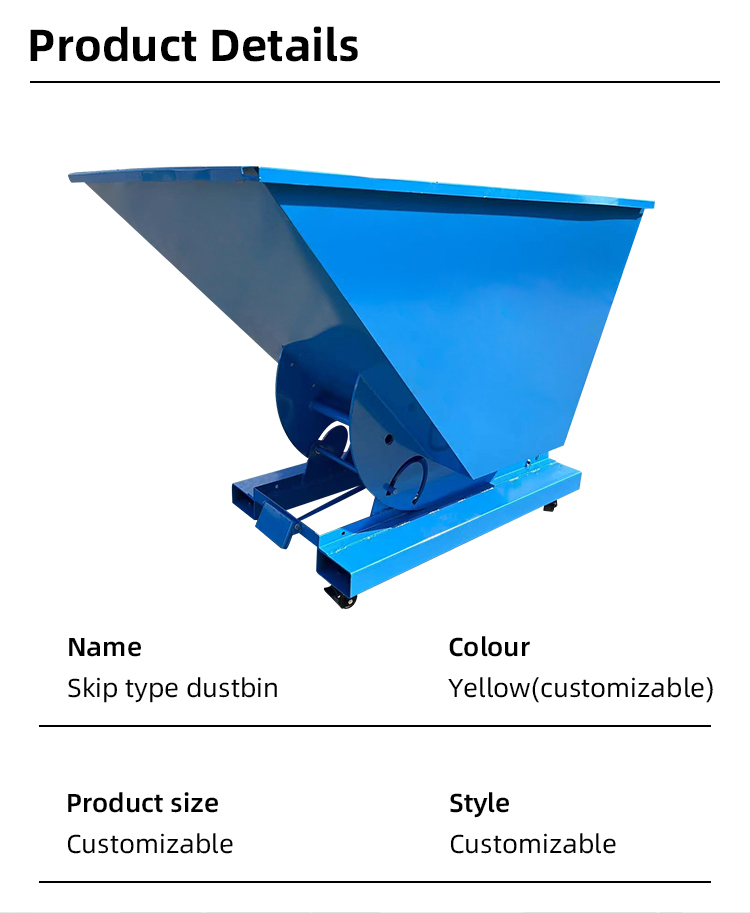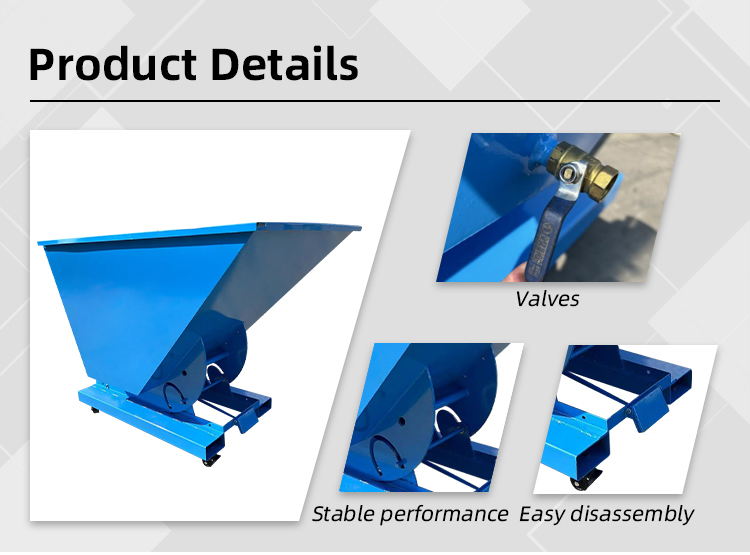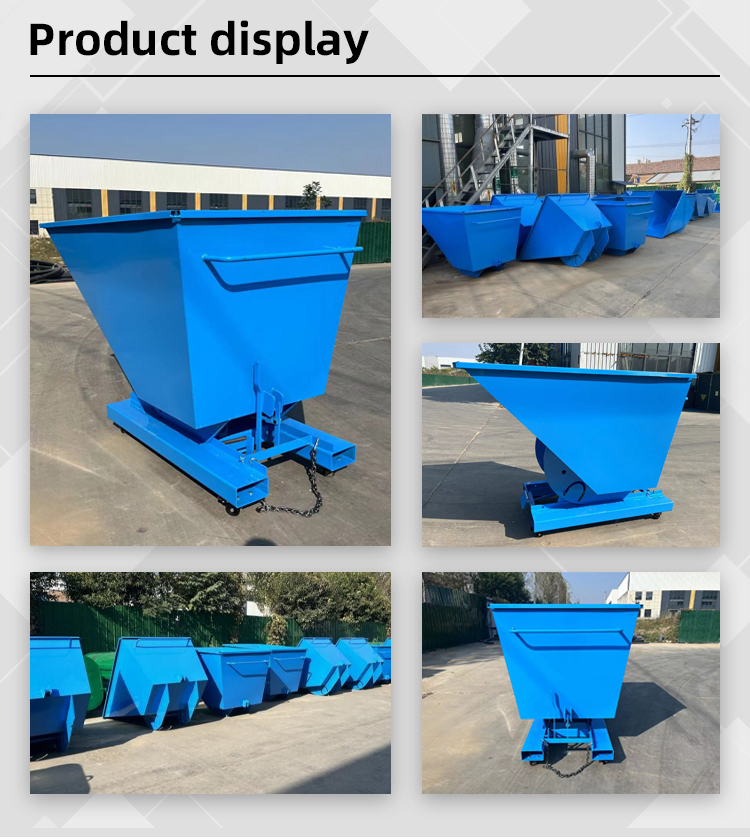
Choosing the right tipper bin for your business is crucial for efficient waste management and operational effectiveness. Tipper bins come in various sizes, designs, and materials, making it essential to understand your specific needs before making a selection. This guide will walk you through the key factors to consider when choosing a tipper bin to ensure it meets your business requirements.
1. Understand Your Waste Type
The first step in selecting a tipper bin is to understand the type of waste your business generates. Tipper bins are designed for different types of waste, including:
General Waste: Suitable for everyday refuse, including packaging materials and non-recyclables.
Recyclables: Designed for materials that can be recycled, such as paper, plastics, and metals.
Hazardous Waste: These require specialized bins that comply with safety regulations to avoid contamination and ensure safe disposal.
Key Consideration:
Identify the waste types your operations produce to choose a bin designed specifically for those materials.

2. Determine the Bin Size
The size of the tipper bin is a critical factor that affects its efficiency and practicality. Consider the following:
Volume of Waste: Estimate the amount of waste generated daily or weekly to determine the appropriate bin size.
Space Availability: Evaluate the available space for the bin in your facility or on-site. Ensure that the bin can be easily accessed for both loading and collection.
Key Consideration:
Select a bin size that accommodates your waste volume while fitting comfortably in your designated space.

3. Material and Durability
Tipper bins are constructed from various materials, each offering different levels of durability and resistance to wear and tear. Common materials include:
Steel: Highly durable and suitable for heavy-duty applications. Steel bins can withstand rough handling and heavy loads.
Plastic: Lightweight and resistant to corrosion, plastic bins are ideal for lighter waste and environments that require frequent cleaning.
Composite Materials: Combining the strengths of plastic and steel, these bins offer good durability while being lighter than steel.
Key Consideration:
Choose a material that aligns with your waste type and handling conditions to ensure longevity and reliability.
4. Weight Capacity
Each tipper bin has a specified weight capacity that must not be exceeded. It is essential to choose a bin with a weight limit that accommodates your waste without risking structural integrity or safety.
Key Consideration:
Review the weight limits of potential bins and ensure they align with your waste generation patterns.
5. Safety Features
Safety is paramount when handling waste. Look for tipper bins that come with safety features such as:
Locking Mechanisms: Prevent accidental tipping and ensure the bin remains secure during transport.
Non-Slip Surfaces: Enhance safety during loading and unloading operations.
Reinforced Edges: Provide additional strength and protection against damage.
Key Consideration:
Select a bin with safety features that minimize risks associated with waste handling.

6. Mobility and Accessibility
Consider how the bin will be transported and accessed. Some tipper bins are designed for easy mobility, with features such as:
Wheels or Casters: Allow for easy movement across sites.
Loading Mechanisms: Hydraulic or manual loading mechanisms can simplify the process of emptying the bin.
Key Consideration:
Choose a bin that fits your operational workflow, whether stationary or mobile, to enhance efficiency.
7. Compliance with Regulations
Ensure that the selected tipper bin complies with local regulations regarding waste management. This is particularly important for hazardous materials, as specific guidelines must be followed to ensure safety and environmental compliance.
Key Consideration:
Check local regulations to ensure your chosen tipper bin meets all necessary legal requirements.
8. Cost Considerations
Finally, consider your budget when selecting a tipper bin. While it can be tempting to opt for the cheapest option, it is essential to balance cost with quality and durability. Investing in a high-quality bin can lead to long-term savings by reducing replacement frequency and maintenance costs.
Key Consideration:
Evaluate your budget and choose a bin that offers the best value for your investment without compromising on essential features.

Conclusion
Choosing the right tipper bin for your business needs requires careful consideration of various factors, including the type of waste generated, bin size, material durability, and safety features. By taking the time to assess your requirements and understanding the options available, you can select a tipper bin that enhances your waste management process, improves operational efficiency, and supports a cleaner environment.
Investing in the right equipment is a crucial step toward effective waste handling, making your business more sustainable and compliant with regulations.
Related News
- Enhancing Inventory Management with Stee... 2020-12-12
- Understanding Steel Pallets: Benefits an... 2020-12-12
- Safety First: The Role of Equipment Desi... 2020-12-12
- The Benefits of Using Hook Lift Systems ... 2020-12-12
- Custom Solutions: Tailoring Equipment to... 2020-12-12
- Transforming Waste Disposal with Tipper ... 2020-12-12
- The Future of Waste Recycling Containers 2020-12-12
- The Versatility of Roll-On/Roll-Off Dump... 2020-12-12
